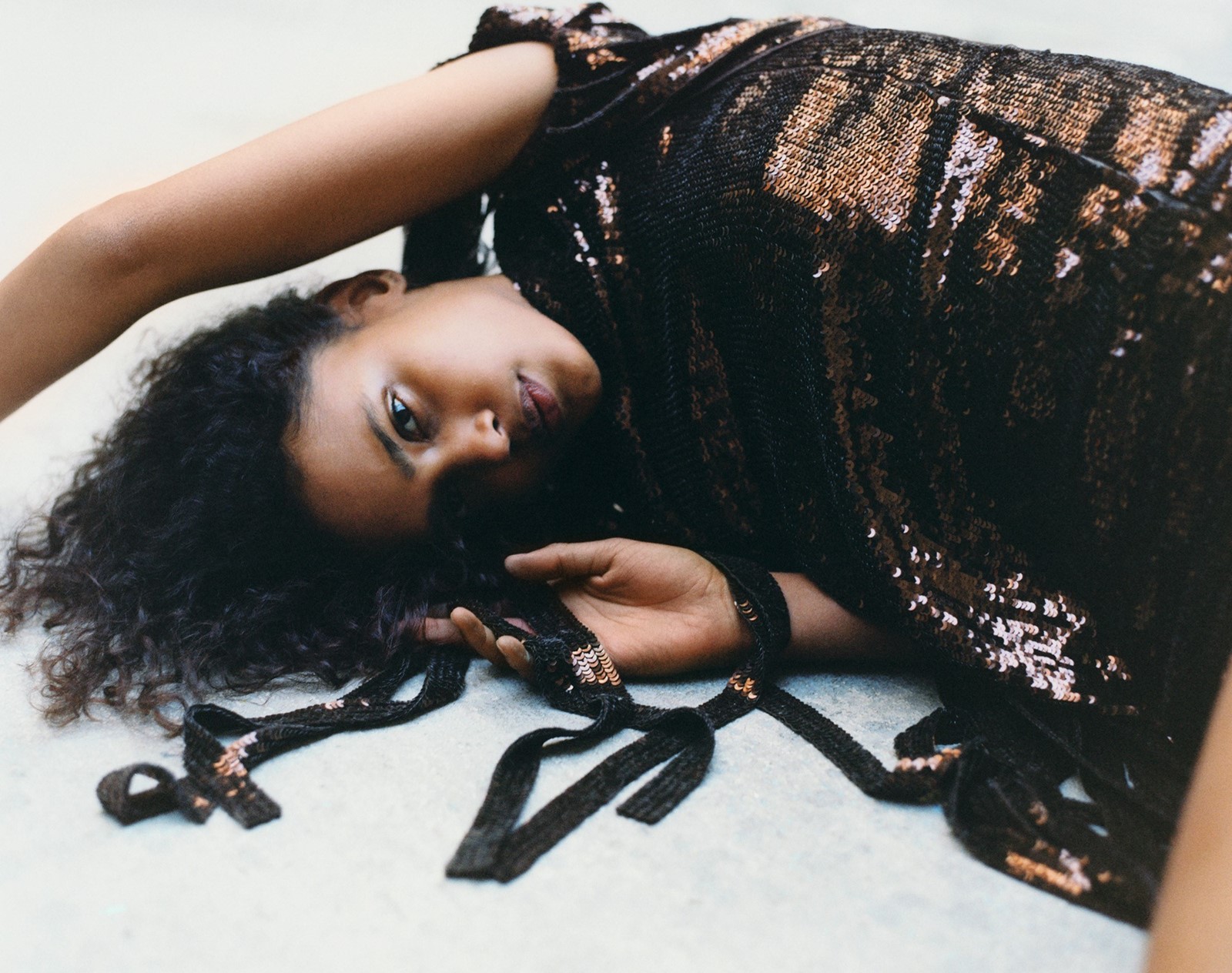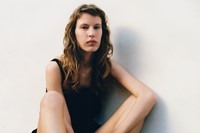This article is taken from the Spring/Summer 2021 issue of AnOther Magazine. To celebrate our 20th anniversary, we are making the issue free and available digitally for a limited time only to all our readers wherever you are in the world. Sign up here.
It takes no great leap of thinking to identify that Pierpaolo Piccioli is a romantic at heart. He has peppered his Valentino shows with poetry – in the sense of the superlative metaphors often utilised to describe his clothing, and in the literal sense, embroidering words on the outside and even hiding them on the inside of his garments. I once interviewed him on the steps of Auguste Rodin’s tomb in Paris, in front of the artist’s most famous statue, dubbed The Thinker by the world but originally titled The Poet. Piccioli took drags of cigarettes, dressed all in black like a beatnik, and told me about love – his love for his job, sure, but also more significantly for his children and his wife. He has tattoos of all their names. Another time, he pointed out to me that ‘Roma’ – where Valentino is based – is just ‘amor’ backwards. I’d never noticed that. But Piccioli has a way with words: he originally studied literature at the Sapienza Università di Roma, before he switched his passion for the poetry of Alighieri and D’Annunzio to an ongoing and intense love affair with fashion. For better, for worse.
It is undoubtedly a difficult time to be in love with fashion – for the past 12 months, fashion shows have been displaced and cancelled due to the pandemic, employees working from home, rather than together in ateliers. This time, I don’t interview Piccioli in a romantic setting. There are no sculptures in the background, nor are we together in his vaulted office in Valentino’s storied headquarters, the Palazzo Gabrielli-Mignanelli – a building that is even grander than it sounds. Instead, we speak over Zoom: one time he’s in that office, another he’s at his home in Nettuno, just outside Rome, by the sea, where he spent much of the Italian lockdowns of 2020 surrounded by family and dreaming about fashion.
Nostalgia is a bitch. When I first interviewed Piccioli in 2014, it was the day after Valentino had staged an haute couture show with imperial ceremony across the Piazza di Spagna, under the setting July sun – beforehand, guests were shown around a cluster of the city’s little-seen sites, such as the 17th-century Biblioteca Angelica library and a hideaway where a Medici cardinal used to take his lovers. The experience was incredible, and those sites were astounding. Valentino fittingly called them mirabilia – the Latin word for ‘marvels’, or things that inspire wonder.
You can add Piccioli’s clothes to the list of Roman marvels. They are potent, powerful, often wonderful. In fewer than five years as sole creative director of Valentino, Piccioli has adjusted the axis of that venerable house from exclusive to inclusive, embracing a sweep of identities that represent, for him, humanity. He has been subtly shifting Valentino for a while – he has been creative director since 2008, for eight years alongside Maria Grazia Chiuri, now artistic director of womenswear at Dior, and since 2016 alone. His clothes have always been excellent, but in this last half-decade have become exceptional – attributed by the designer, in part, to his flying solo, working purely on instinct rather than the discursive to-and-fro that is necessary to partnership. His Spring 2019 haute couture collection remains a stand-out, inspired by the beauty of Black women: a reimagining, he said, of Cecil Beaton’s famous 1948 group portrait of mannequins in Charles James ballgowns, but with women of colour.
That is indicative of Piccioli’s wider approach, for both ready-to-wear and haute couture: ideologically egalitarian and all-embracing, aesthetically slaloming through fashion history – a bit of Balenciaga, a detail from Dior, even a touch of Christian Lacroix (who Piccioli adores) – and mixing the results with contemporary references. It’s all via the designer’s extraordinary sense of colour: he is, possibly, up there with the great Yves Saint Laurent when it comes to his illogically gorgeous combinations of, say, mocha and fuchsia, mint and tobacco, a lilac cashmere shawl atop tangerine trousers, or a deep green sequined chiffon cape over pale yellow, gold and prune. He freely borrows from other cultures, different places and eras – he described one show to American Vogue as “Renaissance meets Versailles meets 60s whatever”, and was absolutely right. His clothes are joyful to watch, and to wear. They’re also, perhaps, joyful to make: three years ago, he asked his ateliers to name the garments of a couture show. They titled that aforementioned cape ‘Liza Minnelli’.
Pierpaolo Piccioli was born in Rome in 1967, the year his namesake Pasolini’s film Oedipus Rex was released. Piccioli first fell in love with cinema, rather than fashion. He wanted to make movies – and he perhaps looks more like a film director than a fashion designer. He talks like one also. Piccioli likes telling stories and conveying emotion – especially through haute couture, which last July was actually showcased via a film shot at the Cinecittà Studios on the outskirts of the Italian capital, models towering in enormous white gowns that became canvases for projections of imagery by Nick Knight. His Spring 2021 haute couture show this January was also conveyed through film, shot in the marble Galleria of Rome’s Palazzo Colonna. “It was about a dream in a world of beauty, with no boundaries and no rules,” Piccioli wrote to me about that show. “It was an act of fashion.”
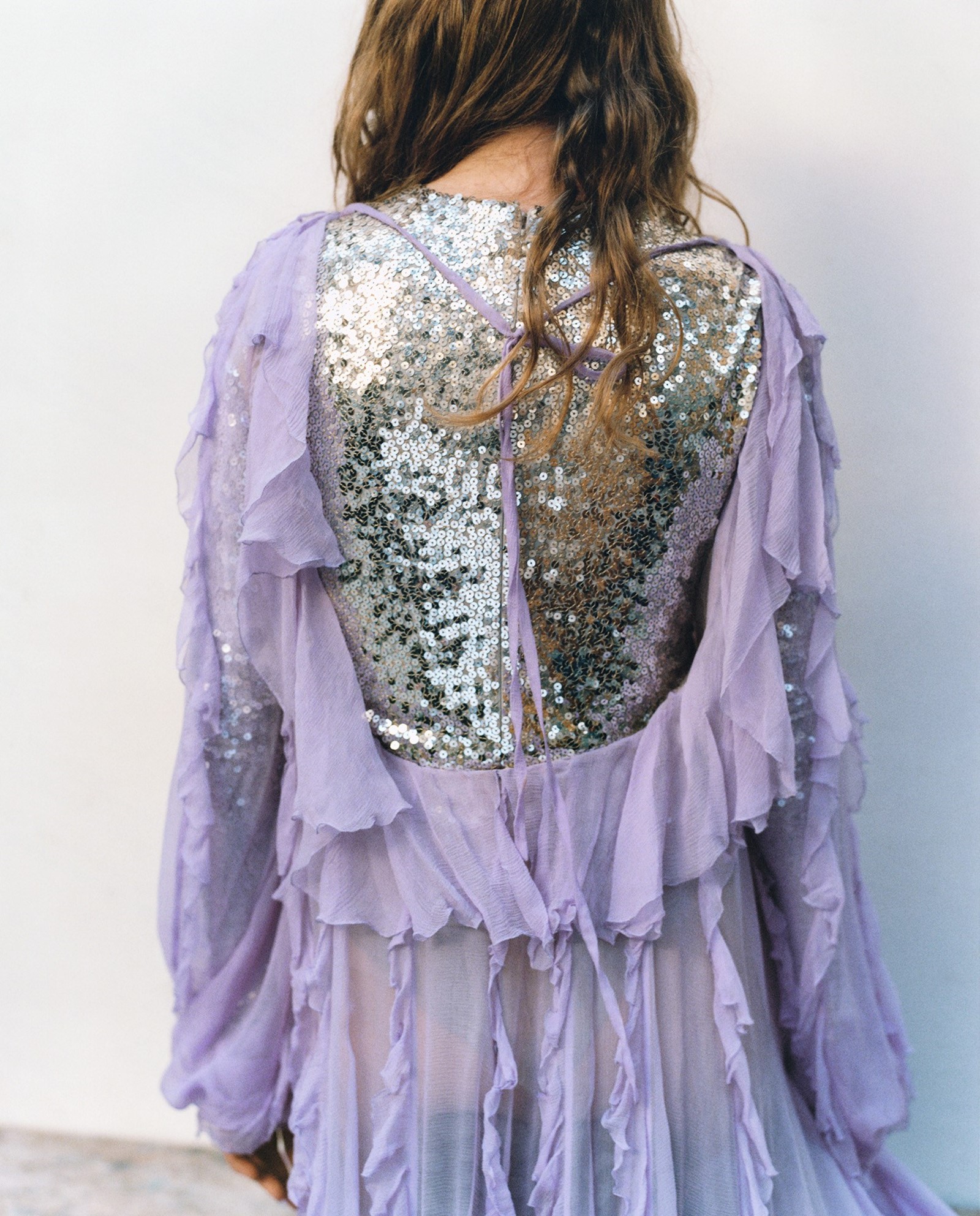
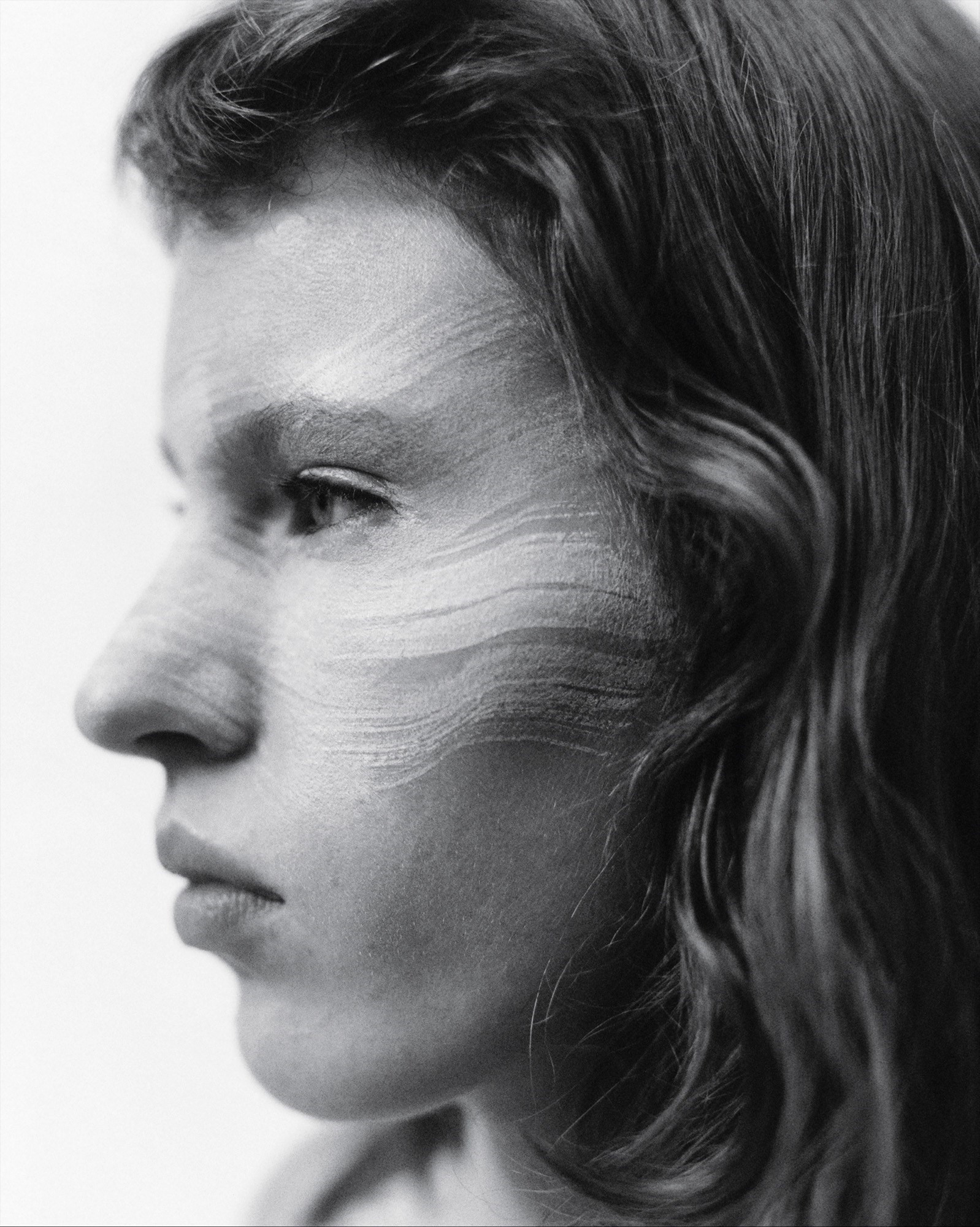
He broke a rule by showing male and female models mixed together. That is par for the course in fashion today – Valentino has mixed them together for the past three ready-to-wear seasons, including its most recent show in Milan in March. But haute couture is a different thing. It was shocking – in the good way – when Valentino loaned the first look of the Spring 2018 couture collection to the musician Troye Sivan. Comprising a bubbly chartreuse silk-faille cape and billowing feathered hat, the look was worn flamboyantly by Sivan (how could it not be?) in the video for his song Bloom – which is about anal sex (it was promoted by the hashtag #BopsBoutBottoming). Fashion houses are precious about their image, especially when it comes to couture. This was another example of Piccioli pushing boundaries, testing limits. Speaking of his most recent couture, Piccioli confirmed he didn’t want to throw up barriers between his couture propositions for her and him. “I would say genderless couture,” the designer countered. “One for all.”
It helps that Piccioli has been at Valentino for 22 years (and counting). He understands the rituals and rigmarole, the formalities – the processes and rules, and how they can be bent, even broken. He also served under the founder, the famously fastidious Valentino Garavani, who is still a patrician presence at Piccioli’s shows, applauding enthusiastically like a proud father. Which, on the one hand, is anticipated: what Piccioli creates under his name is phenomenal, rightly heaped with universal laurels. But on the other, it upends expectations of what Valentino was, is, could be. It is challenging.
Piccioli’s remit seems to be to reform: to modernise, lighten, invigorate. In haute couture, he less blew away the cobwebs than napalmed them. His clothes are sublimely indulgent – of himself as a creative, of us as an audience, most of all of the women who get to wear them. He talks about working with instinct and spontaneity, and there is that sense in the lustrous surfaces of taffeta, faille or organza, extravagantly embroidered and sequined and feathered, and trailing for metres – 60-odd here, 200 there – in a glorious display of excess. Valentino’s ready-to-wear has a slither of that giddiness, but translated resolutely to reality: the rockstud, a Valentino leitmotif, is taken from a piercing on a Renaissance palazzo door, and used to decorate handbags and shoes. If his couture models, during normal, pre-pandemic times, trail through the gilded salons of Paris’s Hôtel Salomon de Rothschild, his ready-to-wear marches – normally in a glass box by Les Invalides, last September in a metal factory, for the first time in Milan.
That Valentino presentation, for Spring/Summer 2021, was one of the few shows staged physically for the entire season. A concrete-floored warehouse on the outskirts of the city incongruously bloomed with flowers – again, literally and metaphorically, insofar as the flowers pushed through cracks and festooned iron pillars, and also appeared on the clothes. Some were strewn with foliate print, some cracked with floral lace or ruffles like petals, some were simply, directly colour-saturated, like a dew-soaked flower head – cyclamen, geranium red, electric violet, peony pink so strong it vibrated. If the stripped-back presentation and grey backdrop felt like an acknowledgement of the times, so too did the masked, socially distanced audience. Revolutions often happen from within: the flowers pushing through the cracks to blossom felt like an allegory for Piccioli’s revitalisation of Valentino – having been bubbling under a placid surface, it has now exploded out of it. It’s free.

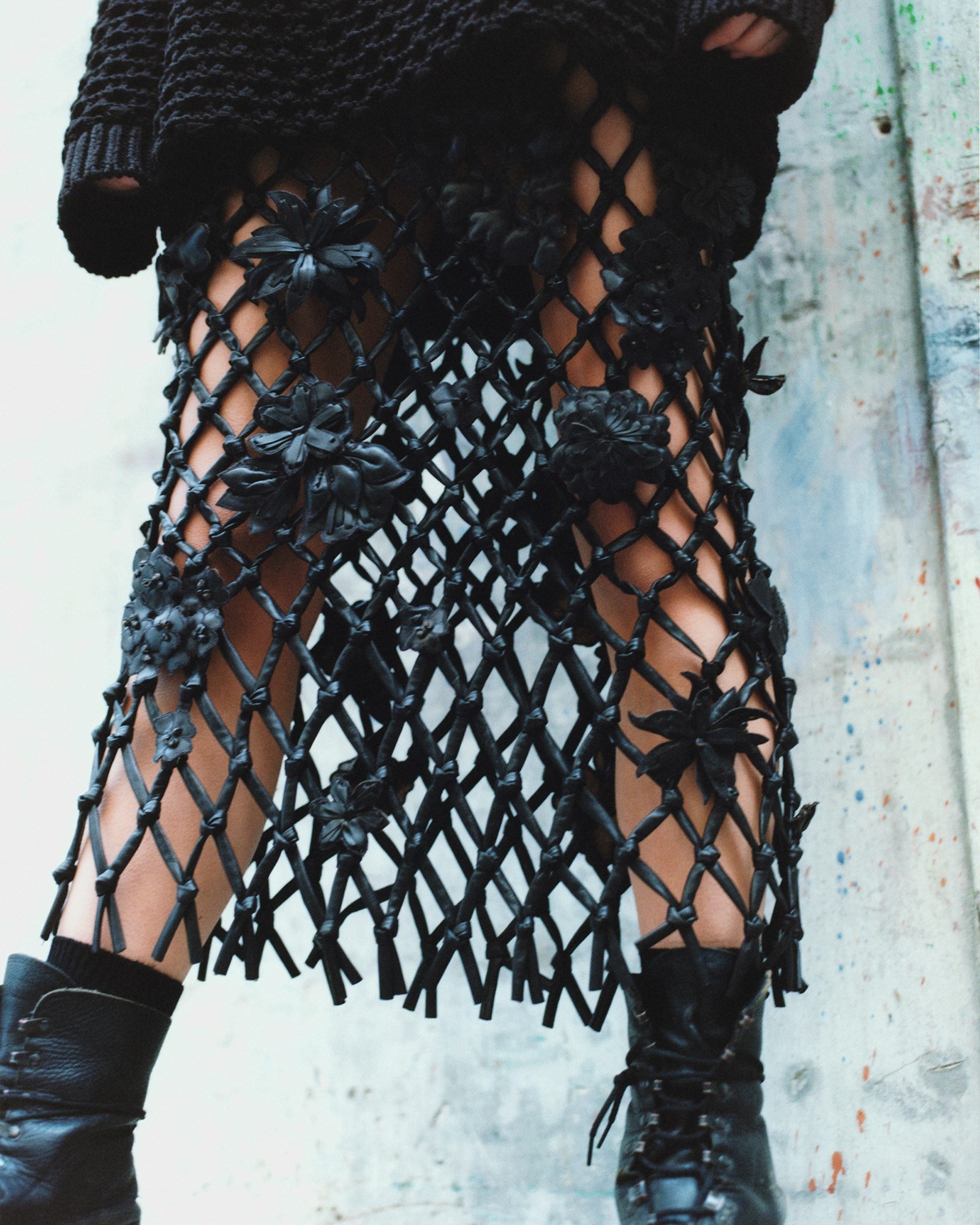
AnOther Magazine: The past 12 months have been unlike any other year – from the pandemic to the Black Lives Matter movement, the revolutions happening now. What do you make of the moment that we’re living in – and how have you responded to it?
Pierpaolo Piccioli: This year was difficult, it was out of the ordinary for a lot of reasons. It was impossible, even – but in a way, I reflected a lot this year. I learnt to react. Not to plan, just react instinctively, spontaneously, to what was happening. Since the very beginning of the pandemic it has been super-tough, of course. We know that. But I remember, the first days during lockdown, I was thinking that I was not there waiting for it to pass. I had, immediately, the sensation that I had to react. And to face the moment, and to live in the moment.
I have always thought this, but now more than ever – that love and passion have to be the leading forces in fashion. Not strategic plans, not rules to follow. But the most creative way you can react is perhaps the strongest one. Even for couture – I decided to do the July couture in a certain way, with the long dresses, because I had in mind this idea of a silhouette. So I started thinking of this idea that you couldn’t do on a normal runway – a different perspective. I decided to do the dresses all in white – also because it was impossible to choose and to dye all the fabric, because the factories were closed. But white was the perfect colour to show the humanity of the craftsmanship – it was also the easiest choice, in a way. Then I decided I could start a conversation and a collaboration with Nick Knight. My dialogue with Nick Knight comes from my deep interest in his visual approach – an apparently cold and artificial language that has been able to give back the perfection, warmth and artisanal passion of the atelier. The haute couture creations presented in the performance have exceptional dimensions and required an incredible number of hours as well as unprecedented mastery to realise. Their celebration was made unique by Nick’s digital projections that played off of the five elements, reuniting these works with their natural dimension.
Of course, it was born of this moment – everything that happened this past year was born because of the moment. Yet I felt that we went beyond the moment, reacting to it. Giving dreams and hope. I really wanted, with couture, to give an idea of hope, of rebirth. The long, white, distant figures. But it was also about the human work that was behind that, underlining the values of couture. And my values, too.
AM: You’re talking about situations that are restrictive – reflected in the nature of this conversation. We can’t be together, to speak. You can’t present your clothes in a fashion show. But it’s almost as if those restrictions somehow became liberating – they liberated you to do something different to a fashion show, to an advertising campaign.
PP: You think out of the box. I think that if you are creative, and if creativity is the leading force of your process, you can do it. You can react, you can go beyond every limit, you can go beyond every restriction. Because you think in a different way, you don’t follow the rules – of the fashion system, or whatever. You just react, and act in a different way.
“My job is about delivering my idea of beauty, but related to the time I live in. I need to be a witness to my time – to give a different identity to the codes of Valentino, a different meaning to a world that everybody knows. You can see the same things and you can have a different kind of emotion, different values. Diversity is a value, being different is a value. Being romantic is a strength” – Pierpaolo Piccioli
Human contact has never failed me, not even during the period of isolation. The possibility to look each other in the face, even with the necessary distance, was a confirmation of empathy. I am proud to say that this kind of empathy has accompanied me, my teams, and the people closest to me at all times.
I started the July couture collection wondering how I could deliver this idea of dreams and hope that were always part of couture. Dreams, and something that is about human beauty. You learn to react and to think and to act in a different way. Rather than just thinking how ugly this situation is, you think about how you can react. Because this is our job, to deliver a dream, hope, positivity, empathy, values. If not, we just deliver clothes. And that is not enough.
AM: How did those thoughts – and the world situation – affect the collection you showed in September? Obviously, you were showing it in Milan instead of Paris. But what did you want the collection to convey to the audience? Did you think of it differently?
PP: Those experiences made me even more radical in some choices. I didn’t want to go back to the rules. I started thinking of the collection with the idea of changing the identity rather than the aesthetic. I wanted to keep the signs and the codes of the house of Valentino but give them new values. With Black Lives Matter and the US presidential election ... Today, you can’t not see what’s happening in the world. If you are a creative, you have to absorb what’s happening and you have to be aware.
I was thinking of values like inclusivity, diversity. And I want to be inclusive, I want to celebrate diversity and equality. I think that’s the only possible way to be, it’s not a choice – if you want to be in this moment, in this world. So I started thinking of Valentino from a different perspective. Keeping the same codes but for a different generation. The twist was to shift the idea of the exclusive world of couture into the world of inclusivity that represents this moment. So that was the beginning.
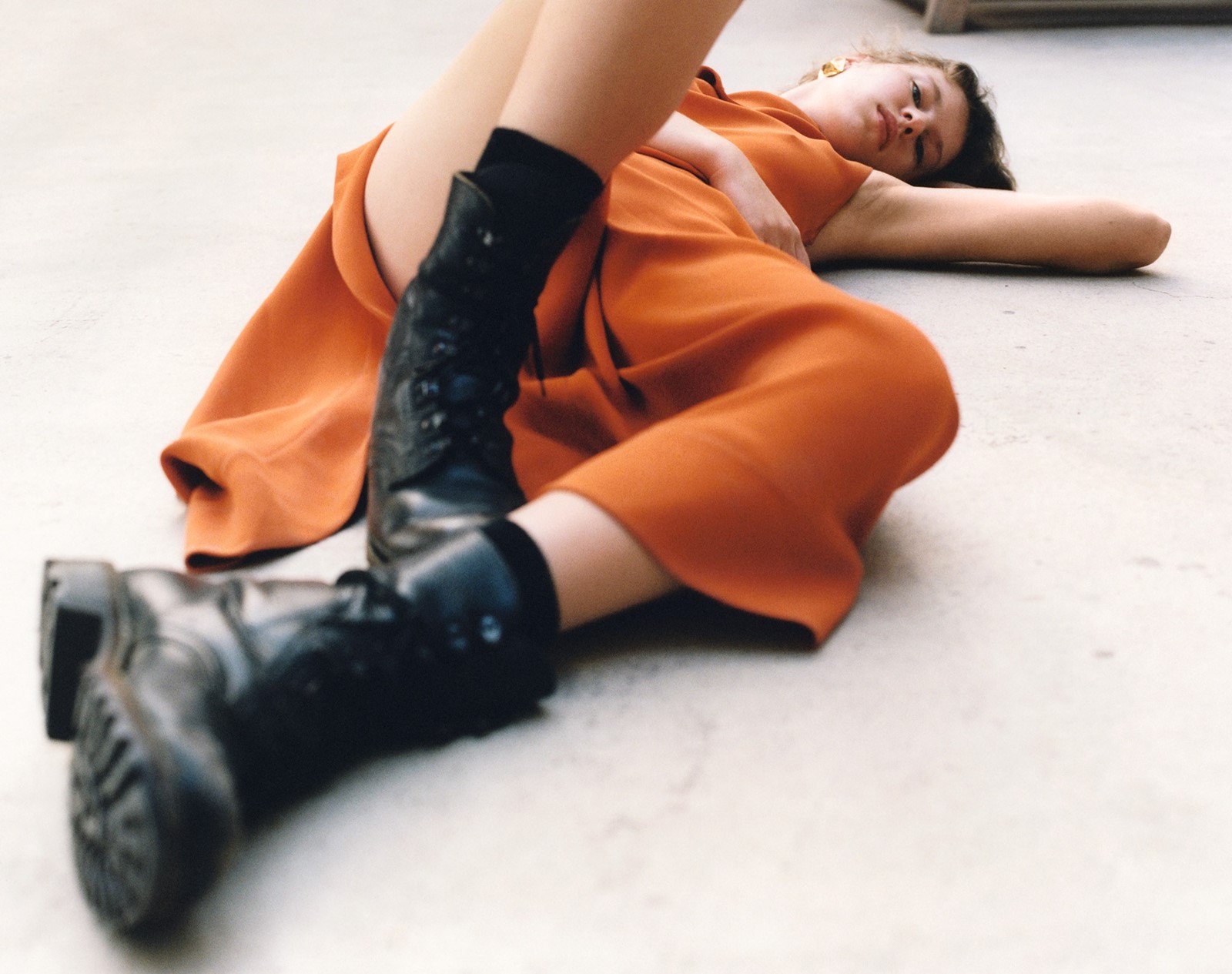
AM: How did that affect the clothes?
PP: First, I didn’t want to have my teams in Paris in that situation – because I feel a responsibility. It felt too dangerous to go to Paris.
Paris is the city where we have always hosted our shows and that truly embodies Valentino’s DNA. The current situation has forced us to take an unusual decision. I believe that, in this moment in time, it is of paramount importance to stay grounded and focused and to work on tasks.
I feel energised when I can work on ideas and this is the time for ideas to spread and grow. Milano was a new opportunity, a great project that I have developed with my teams with the aim of working around the idea of identity. I took it as a new opportunity, to show Valentino from a different perspective. I didn’t want to show in a palazzo or a museum, I wanted to be in a very industrial space – where you wouldn’t imagine a chiffon dress – with streetcast models. They were from the streets of London, Amsterdam, Roma, Milano – all sharing an individuality. We tried to give each of them a radiance, a grace, using the same kind of things – lace, flowers. They were also kind of old, the printed flowers. The codes of Valentino but seen in a different place, with different people.
I was approaching the collection with this idea of re-signifying. Even when I was designing the prints, I was not looking just for the one I liked the most, but the one that was older, more known, in order to change it. When you’re subversive, you have to do it from the inside. I wanted to change the meaning of things, not just the surface.
AM: That idea of individuality connects a lot with what you do in couture – each look is different, like each person. A reflection of humanity.
PP: To me that’s the meaning of couture. I don’t like to talk of couture like the petites mains, the hands of couture, I feel that’s so ... snobbish. Couture is about care, it’s about uniqueness, it’s about love for what you do. If you don’t see that, you just see beautiful techniques. But techniques are techniques. Even the most fantastic embroidery or fabrics cannot compare to the hours of work, to the people. Couture is about people, it’s not about technique. It’s about love. It’s also about extravagance, it’s about boldness – that makes couture human and individual. I definitely want to translate this culture of couture into every aspect of the company.
If you create couture, you think in a different way. You’ve got to have this kind of care and attention and also humanity in all the aspects.
AM: You shot the Cruise 2021 lookbook yourself, in your hometown, on Mariacarla Boscono – who lives nearby. You showed the last two haute couture collections in Rome, you showed the last two ready-to-wear collections in Milan. Did you have a different emotional connection with these shows because you were showing them in Italy, at home?
PP: I don’t know if it’s about home. I have a different emotion because I felt I was surrounded by people who share the same love and the same passion. And that was the most emotional and moving thing I experienced. When you’re used to the same routine – going to the studio, fashion week – it’s like a process. In Milan in September, we really wanted to face the moment of doing a real show, with the crisis and everything. But I was not alone. If I was alone, I couldn’t do it. I felt really surrounded by my people, a real team, all going in the same direction. And that’s something that really moves me, more than anything else. Following your creativity and not compromising, with a lot of people sharing the same dreams – I felt lucky.
Your first question maybe reflected that. I did a lot of things during this year that I hadn’t done before. And I like that.
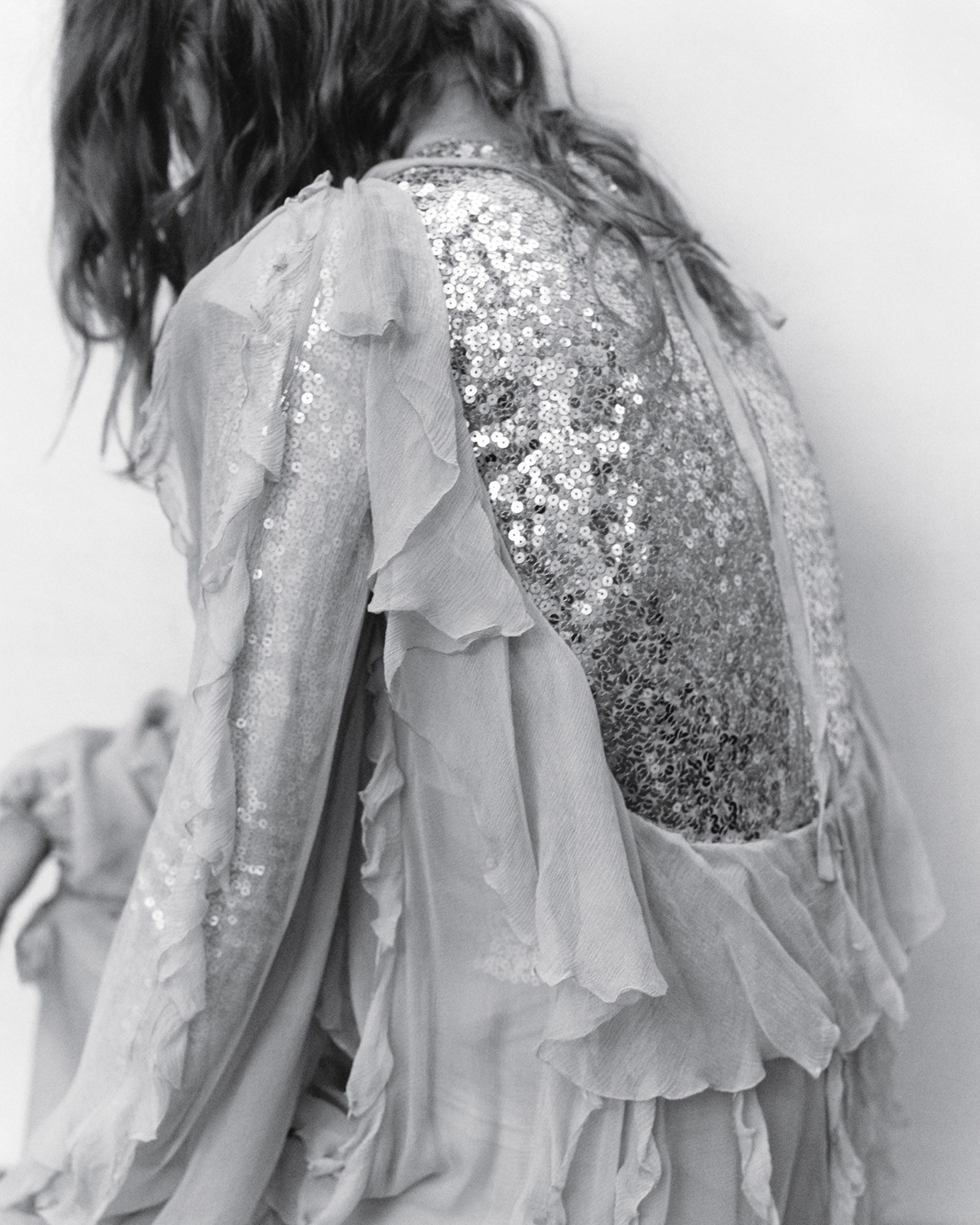
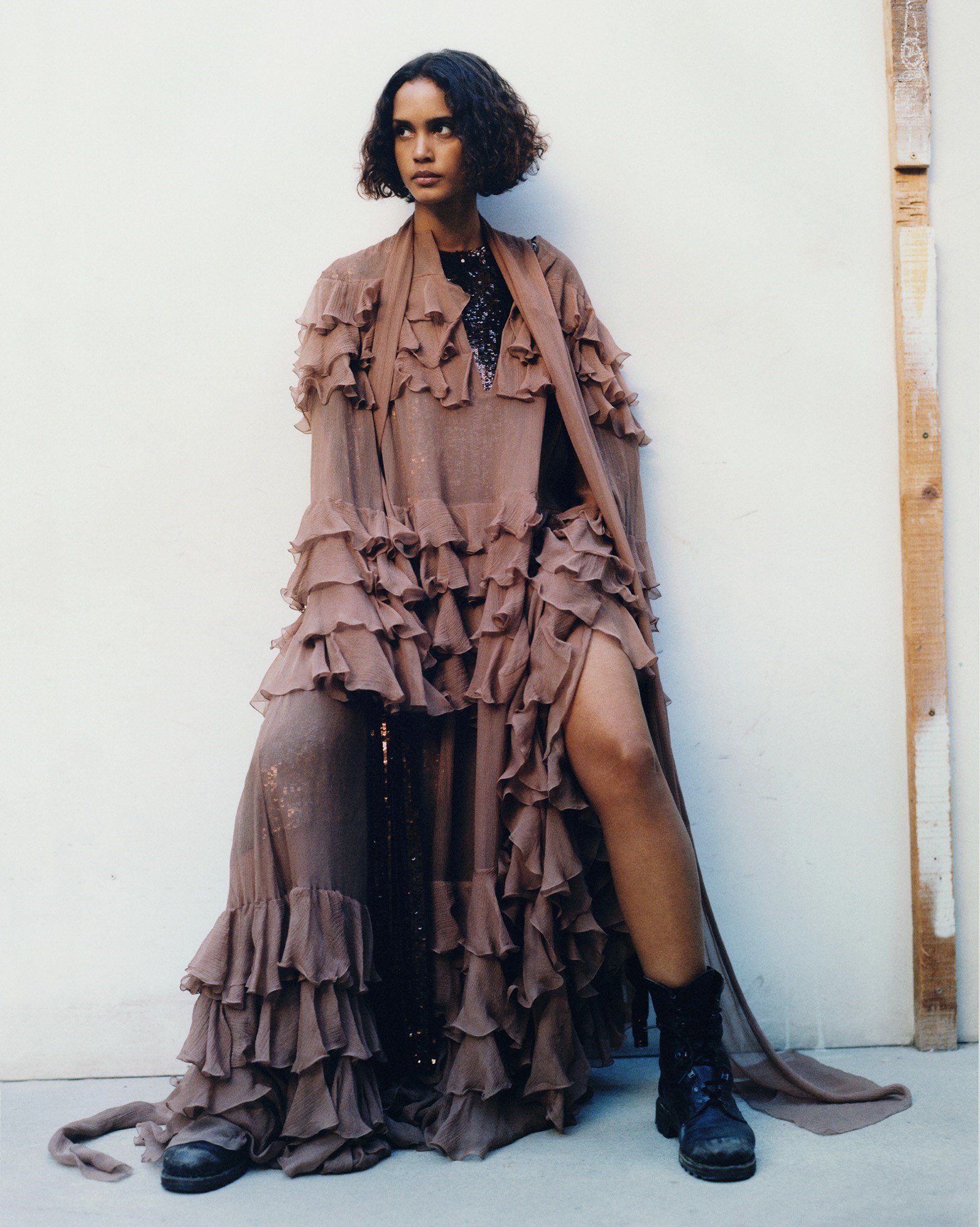
AM: You’ve mentioned romance a few times during this conversation. Why do you think romance is powerful in a moment like this? And what for you is romantic today?
PP: I feel that romanticism is an individual approach to life. I don’t think romanticism is about prettiness. For me, romanticism is something that is not objective, just subjective. An individual approach, of course, is about yourself, is personal, is intimate. Sometimes, you cannot explain the reason for your choices – because it’s not objective. But I think that today it is most important to express yourself, to be yourself, to be very close to your identity. That’s the only thing that makes you different.
That in the end becomes a strength – if you think independently it becomes your strength, you can show sometimes the fragility you have. If people feel that, that’s something real and authentic, not just a cliché. People follow you because they share your emotions. That’s why I think that romance is important today. ‘Empathy’ is a very important word. Only if you share values can you really be connected – if you feel other people, if you feel the authenticity of different identities together. Because, in the end, all of us dream, all of us have emotions, but that’s the only thing in which we are all equal. Then we do it in different ways.
My dream is not a fairy tale. ‘Fairy tale’ is a different term and I don’t like it. That’s like, you live your life and then you can think of something different one day. But I think dreams can be part of your reality. You can be positive, you can fight for your dreams. Like what happened in America – it’s changed the world.
AM: In America – not to get too political, although it’s difficult not to these days – it felt as if there was one side with empathy and one without. A side that was about community and a side only concerned about the self.
PP: If you just worry about yourself – you’re alone. I think that’s the worst thing. If you think only about yourself, you’ll never be happy. You have to embrace other people, other cultures, other individuals. To understand them. I think that, in America over the past four years, something very important happened – not only in America, all over the world – an awareness grew that you need to fight for your rights. Someone else will not do that for you. You cannot demand someone else do it while you live your own life. You have to be exposed to say what you believe, what your values are, and everyone has to do it with their own language.
“Love and passion have to be the leading forces in fashion. Not strategic plans, not rules to follow. But the most creative way you can react is perhaps the strongest one” – Pierpaolo Piccioli
You mention politics – I don’t think that fashion is political, but I am, of course. I have political thoughts. And I need to tell them, through my language, which is fashion. So, images. If I were a politician I would be using words. I chose to be a fashion designer, and I want to use my voice to deliver my values. But I think to be relevant is to do it through images because sometimes you can be even more assertive. Not talking, not writing, but through image, through fashion. It’s like a book and a movie – when you read, you have your imagination, you create your own world. With a movie, it’s already there. Fashion can be super-powerful, like a movie – it’s already there. When I did the couture show with the Black models, I didn’t need to explain, it was there. Cecil Beaton, the Swans of Truman Capote. But the beauty of couture doesn’t have to be dusty or belong to the past. It can relate to this time – these values.
AM: How do you feel couture – or rather, fashion – is different today?
PP: The big difference today is the idea of community. When you have community, you share values, you share ideas, you share the same kind of thoughts behind choices. Valentino was a brand actually closer to the idea of lifestyle. You aspired to be someone else. The big challenge, for me, was to cancel the idea of lifestyle.
I’m a fashion designer and I live in a seaside place. It’s not exotic for a fashion designer! But lifestyle doesn’t mean anything, just a sharing of surfaces. You see the same kind of life, but you never think of the people.
Community is different. It is a group of total individuals but they share values, through their own language, their own choices. That’s a big shift for me. To move Valentino from the idea of lifestyle to the idea of community. To people who have the same values, not the same surfaces.
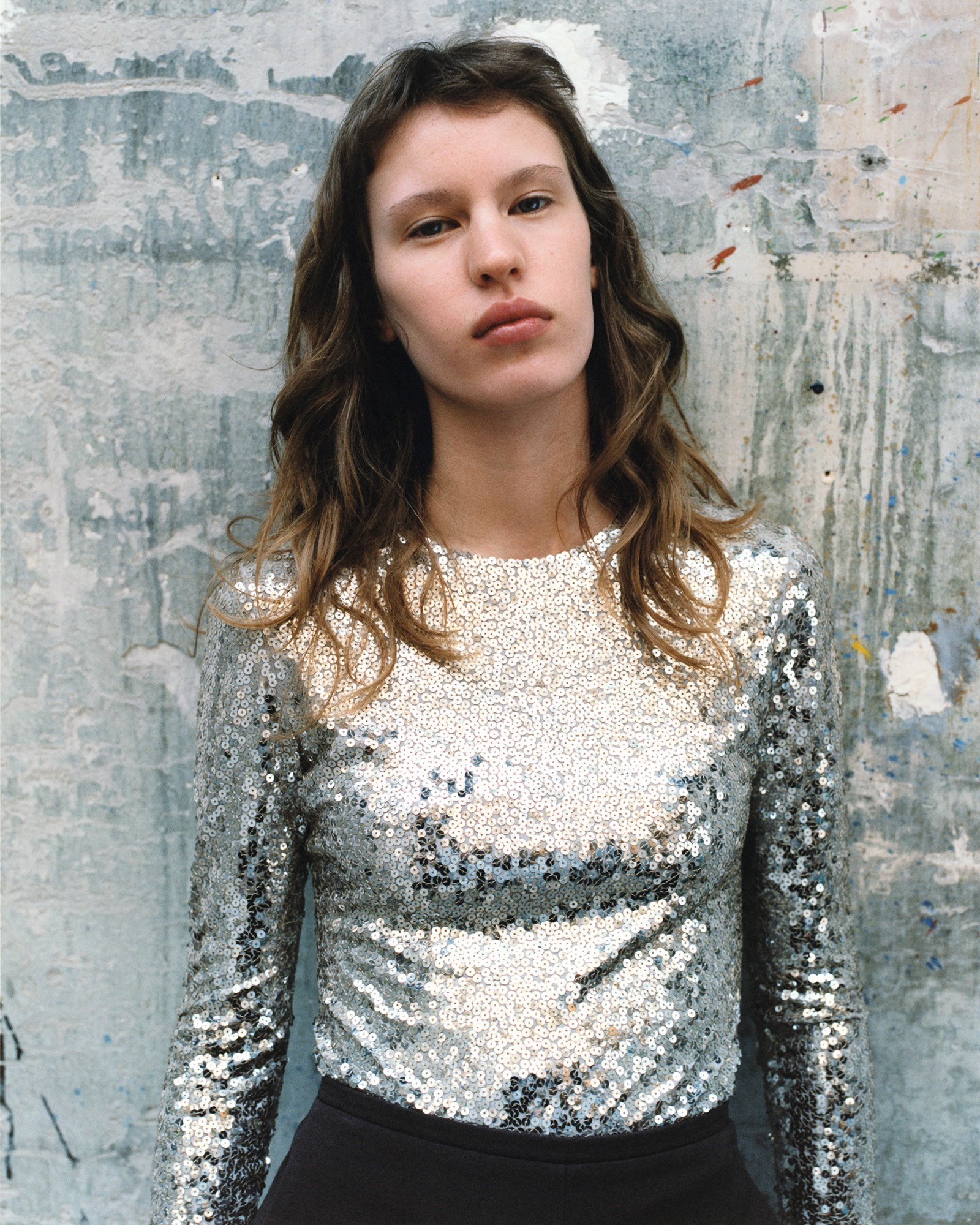
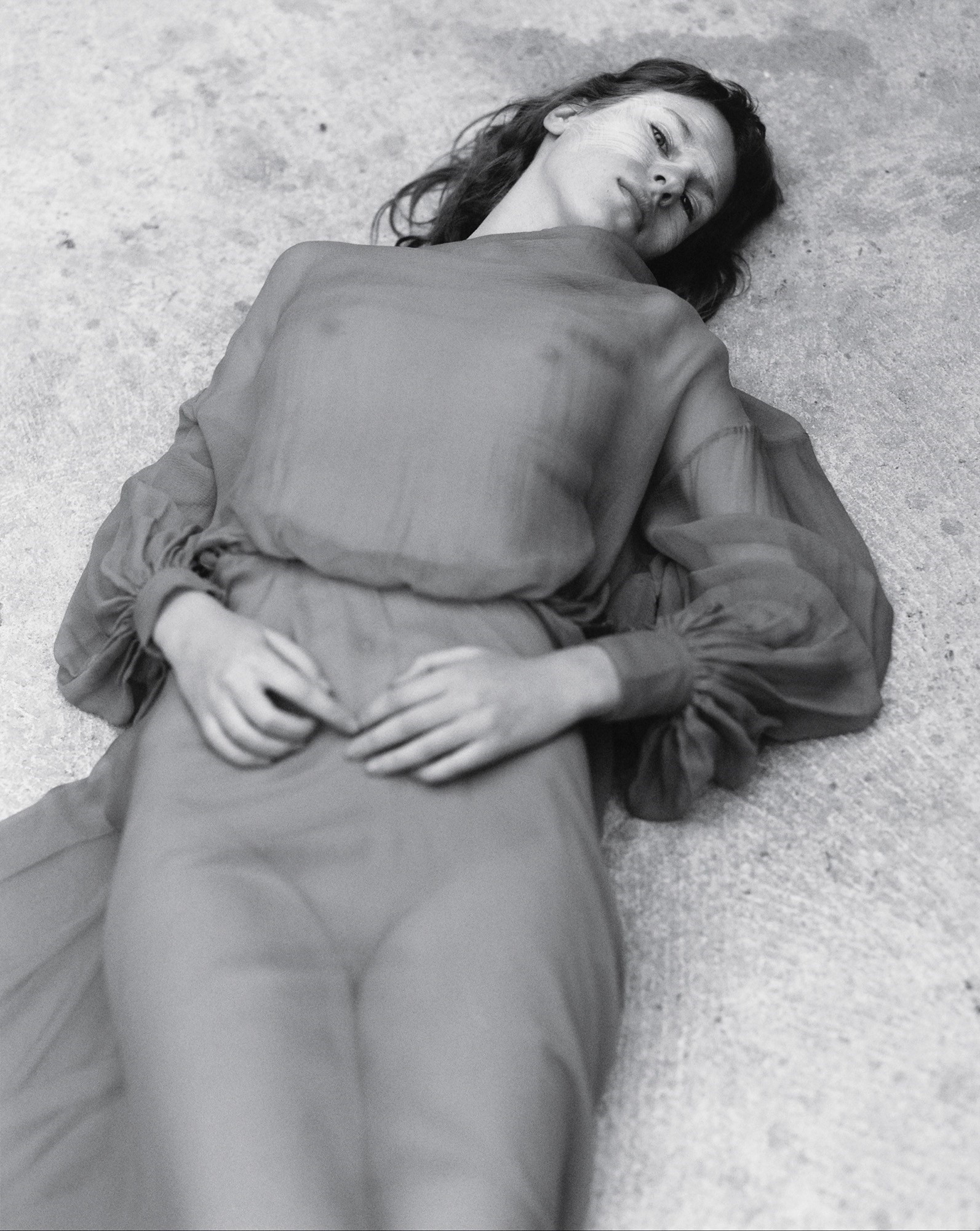
AM: It’s interesting to juxtapose that with your approach to design. You are speaking very big – philosophically. Do you approach fashion intellectually? Are you thinking about those ideas when you’re designing? Or is it more spontaneous and instinctive?
PP: This is a question I posed to myself recently. Because I always felt I was rational, thoughtful. But I realised, during this year more than ever, that I’m not. I am very spontaneous in the way I think. The first intuition is definitely deep, emotional, moved by personal reason. I never had the thought that I have to arrive somewhere.
I start every collection with an intuition I have of the message I want to deliver at the end. Then I work back, even rationally, trying to make it. Even in a kind of obsessive way. That becomes a moment when I’m more thoughtful, complex. The first moment is super-free and emotional.
In the process – sometimes, not always – it becomes a more scientific approach. But when I have to involve other people, I never talk about a ‘strategic process’. I always try to involve people in my first idea, which is emotional, personal. I try to explain why I want to go there, why I have that need. Then I become obsessive with details. The big picture is super-emotional. It’s dreamy, it’s spontaneous. The small picture can become very specific.
AM: It’s like you were saying about technique and couture. The last thing a designer must want is for people to leave the show and say, “The technique was so wonderful.” You want them to leave it and say, “I loved that, I feel so happy.” You want to elicit emotion.
PP: I feel that beauty is about grace. Grace is not something you can describe, it’s something else – a perception. When I talk with my premières, I never say, “I want a centimetre less.” I say, “I would like the dress to move this way, to give this kind of sensation.” They are so good at their job, they can translate my intention, my idea.
Of course techniques are important – in couture, but also in sneakers. But I think it’s important to deny the technique and execution in order to arrive at this kind of magic that is fashion. Being beautifully done doesn’t make it beautiful – beauty is something that moves me, that gives me some emotion, makes me reflect. Even if I don’t reflect the dreams of the person who created it – but it makes me reflect my own dreams, touches me personally. But it’s a connection. And that’s what I’m interested in.
I once started a couture collection with an idea – one of my seamstresses told me that at the V&A she saw a Valentino dress from ten years ago. That dress made her remember the moment when her father was alive, a moment of her life. So I started a collection thinking how materials, fabric – fashion – can reflect the emotions of people, how materials can absorb that. You can’t describe it, because it’s not possible. That was the collection when I asked my ateliers to name the outfits – to describe that moment of their life, the feelings they had.
And I felt it, I felt their emotions. No packaging, no storytelling, just the emotion we were sharing. I start work on collections not following a story to tell, but being very free, reacting to the fabrics, the embroideries. I think that Yves Saint Laurent never thought about a story he wanted to tell – he reacted. That means, to me, to live in the moment – and for the clothes to deliver your moment. Because you absorb what’s in your own world and you filter with your sensibility. Your eyes are different – my eyes are different now, to one year ago. And through my eyes, my feeling, I see things in a different way. Even if I were to do the same collection today, I would deliver it in a different way than in the past. I would never lose the freedom of expression, and this is the most important and beautiful part of my job.
Hair: Christian Eberhard at Management Artists using ORIBE. Make-up: Mathias van Hooff at Management Artists using MAC. Models: Mary Duleu at The Hive and Malaika Holmen at Next. Casting: Noah Shelley at Streeters. Photographic assistants: Arturo Astorino and Rémi Procureur. Styling assistants: Aline Mia Kaestli, Jordan Duddy and Isabella Kavanagh. Production: Farago Projects. Producer: Vera Massias at Farago Projects. Production assistants: Alexandra Carney and Bacary Seidi. Post-production: IMGN Studio.
This article originally featured in the Spring/Summer 2021 issue of AnOther Magazine which will be on sale from 8 April, 2021. Pre-order a copy here and sign up for free access to the issue here.
